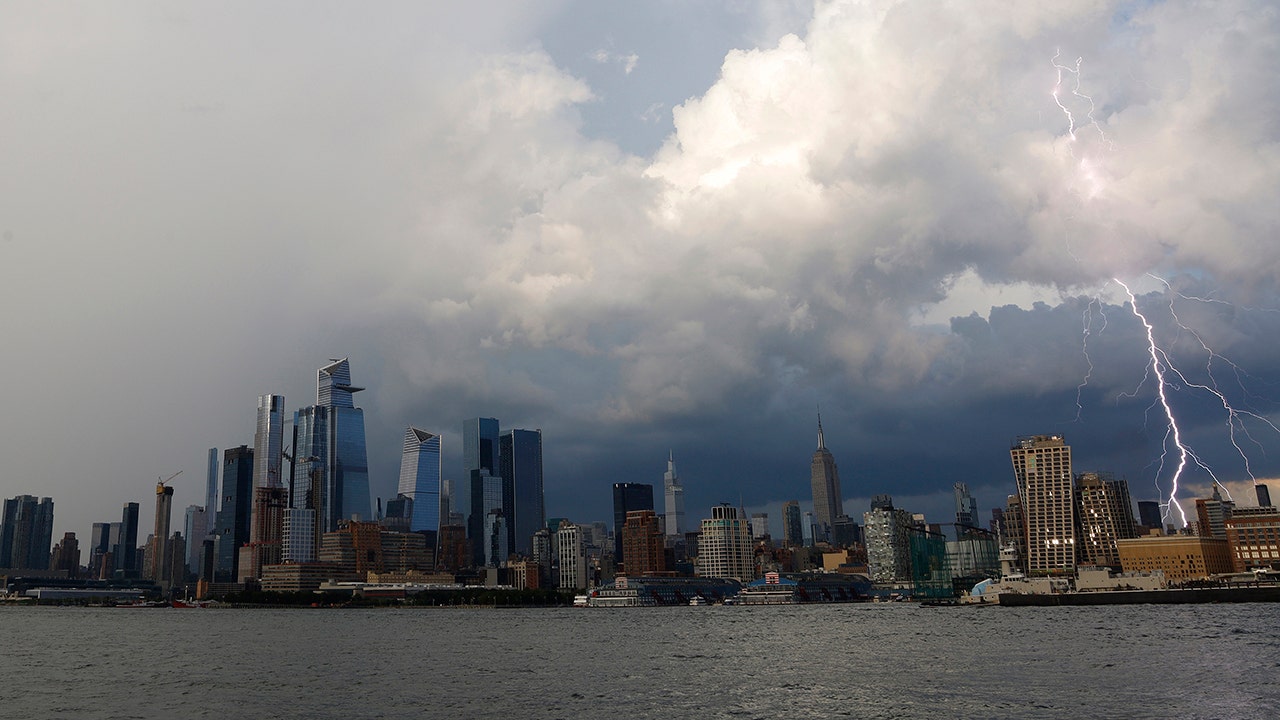When Erik Neil moved to Norfolk to become president of the Chrysler Museum of Art, he’d experienced the threat posed by the climate crisis to museum collections. Six months prior to Hurricane Katrina, he led an effort to find safe storage for the Newcomb Art Gallery collection at Tulane University in New Orleans. Just in time.
The Chrysler Museum sits at the culmination of The Hague, an inlet of the Elizabeth River, a postcard-perfect location for decades. But that beauty belies an increasingly sinister reality. In recent years, rising tides and intensifying rainstorms repeatedly submerged streets, threatening the museum and its decade-old addition, the Perry Glass Studio.
“We’ve never had water in the building on the first floor,” said Neil, who has watched the water rise over the past decade. “But we are in this low-lying area, and there are these creek beds underneath and culverts and all of that. The roadways can become impassable on a nice sunny day. It doesn’t have to be a storm. It can be the tides and a full moon flooding. I lived in New Orleans for seven years, so I wasn’t unfamiliar with that aspect of life.”
Fast forward two decades from his days in Louisiana and Neil has overseen an evolving master plan to protect the museum and its collection in a city that is second behind New Orleans as most threatened by the effects of a warming world.
“It was clear how vulnerable that the museum is,” said Thom White, design principal at Work Program Architects, the Norfolk firm that created the plan. “There’s a culvert that goes right under the museum, and they’ve got priceless works just sitting there knowing that flooding happens all the time.”
White’s sister remembers being stranded, trapped at the museum because the water rose so quickly around it during a storm. “Right off the bat, we were working on ways that we could protect the collection, protect the grounds,” he added.
The Chrysler is not alone in facing the threat. Data from the Institute of Museum and Library Services shows that more than one-third of U.S. museums and related organizations are within 60 miles of a coastline; a quarter of those sit near highly vulnerable coasts. A survey commissioned by the Mellon Foundation reported that 35% of museums experienced damage from the climate crisis. But only half of those have prepared to protect against those damages.
The Smithsonian Institution museums have a plan. The Whitney Museum of American Art has raised the level of its floors, removed all permanent exhibitions from the first floor and recruited a firm that manufactures watertight doors for the Navy to build floodgates for its loading dock on the river. The Baker Museum in Florida installed a hurricane-resistant facade.
But for smaller museums, addressing climate change can be difficult because of the cost. Not the Chrysler.
The museum has made modifications to the main building, creating a floodgate that can be erected, moving the art in storage to the second floor and elsewhere and creating plans to raise walkways and streets, although that’s an expensive solution destined for future decades.
When the Chrysler embarked on a recently-completed $30 million expansion of The Perry Glass Studio across the street from the main building, resilience was at the forefront.
“You can’t fight Mother Nature,” Neil said. “We needed to be very, very sensitive to the idea that we needed to build in a way that was suited.”
To combat the floods, the 21,000-square-foot expanded portion of the studio is four feet higher than the first phase. The building sits on soft fill, but rather than using piles or other foundations, it rides on an innovative foundation called rigid inclusions.
Robert Crawshaw, a senior architect from Work Program Architects, the firm that designed the expansion, described it as a large bed of nails, 470 in this case, created by boring a huge needle 100 feet down and then backfilling it with concrete to form a solid foundation.
The site also features a rain garden encircling the building’s entrance that holds floodwaters, so they slowly percolate into the soil, only releasing into the city’s beleaguered stormwater system when the garden is overwhelmed. The adjacent parking lot has been graded so runoff flows into the rain garden. A stormwater drain was raised to stop tidal flooding from flowing up through it, inundating the street.
The project had the space to create an urban rain garden, something rare in Norfolk, a city that is largely built out with impermeable parking lots or buildings. The designers made the rain garden a work of entrance art, with visitors walking up an ascendant serpentine path. It’s an example of learning to live with the water, something often talked about in Norfolk.
“As part of Chrysler’s master plan, they wanted to say, we’re on the front of this and we’re dealing with it,” Crawshaw said. “So, we didn’t want to hide the rain garden on the back of a property. We wanted you to be immersed in the efforts that the Chrysler was doing.”
Moving was a part of the conversation for the museum’s resilience masterplan, but was rejected, according to White.
“The Chrysler Museum is such a part of the identity of Norfolk in that location, and the power of its connection to the community is worth keeping it there,” he said. “Doing things like the expansion of the glass studio builds greater connections to the community. And so, for as long as it can be here, we want to try to keep it.”
This story was originally published in the Virginia Mercury. To read the story there, go here.
Originally Published: July 10, 2025 at 9:17 AM EDT









 English (US) ·
English (US) ·